The musician Prince and writer Richard Matheson have something uniquely in common. They both created so many important and influential works it’s entirely possible you’ve experienced them without ever realizing it. Matheson’s bibliography easily reveals a titan. He’s responsible for I Am Legend, Hell House, Nightmare at 20,000 Feet, and the Zuni fetish doll, He Who Kills, in Trilogy of Terror. While those may be his most familiar works, his influence runs deep through television, films, and short stories.
Stephen King said it best when he wrote that “like rock and roll… horror must constantly regenerate and renew itself or die.” Richard Matheson was the rockstar that rejuvenated the genre, inspiring generations of writers in his wake. He planted horror in readers’ backyards and crafted relatable characters anyone could identify with. He twisted the mundane into a source of terror, making ordinary existence a minefield. Furthermore, he blurred the lines between good and evil revealing that monsters are a matter of perspective.
Born in 1926, Richard Matheson grew up in Brooklyn, New York. As a child, he read voraciously at the local library. His main diet consisted of historical fiction by Kenneth Roberts. During World War II Matheson served in the military then afterward, around 1949, he earned a degree from the Missouri School of Journalism.
Moving to California, his writing career began gaining momentum. Specifically, when the July 1950 issue of The Magazine of Fantasy and Science Fiction published his short story “Born of Man and Woman.” It’s essentially the diary of a child kept in a cellar. The broken English narrative conveys steadily more atrocious circumstances as the reader realizes the hideously deformed child is locked away and abused by its parents. Yet, as the story unfolds it becomes increasingly clear the kid may in fact be a legitimate monster. It describes itself as having multiple limbs, oozing a green substance, and eventually plans to savagely attack its parents if they keep beating it.
The story produces sympathy for the narrator while simultaneously implying the grim logic behind what the parents do. Evil here is uncomfortably easy to understand, whether siding with the parents or the child. It’s possible to see all the points of view, something Richard Matheson exceled at. Like several of his later works, the horror here isn’t simply the scenario but the way characters react to circumstances in a relatable way.
Short stories have never really been a way of paying the bills. This would unfortunately be true even for a promising writer like Richard Matheson. Despite regularly selling short stories, he worked at the Douglas Aircraft plant in Santa Monica. Only after the success of his novel The Shrinking Man did Matheson gain the financial freedom to write full time. Part of that stemmed from the book being turned into a film.
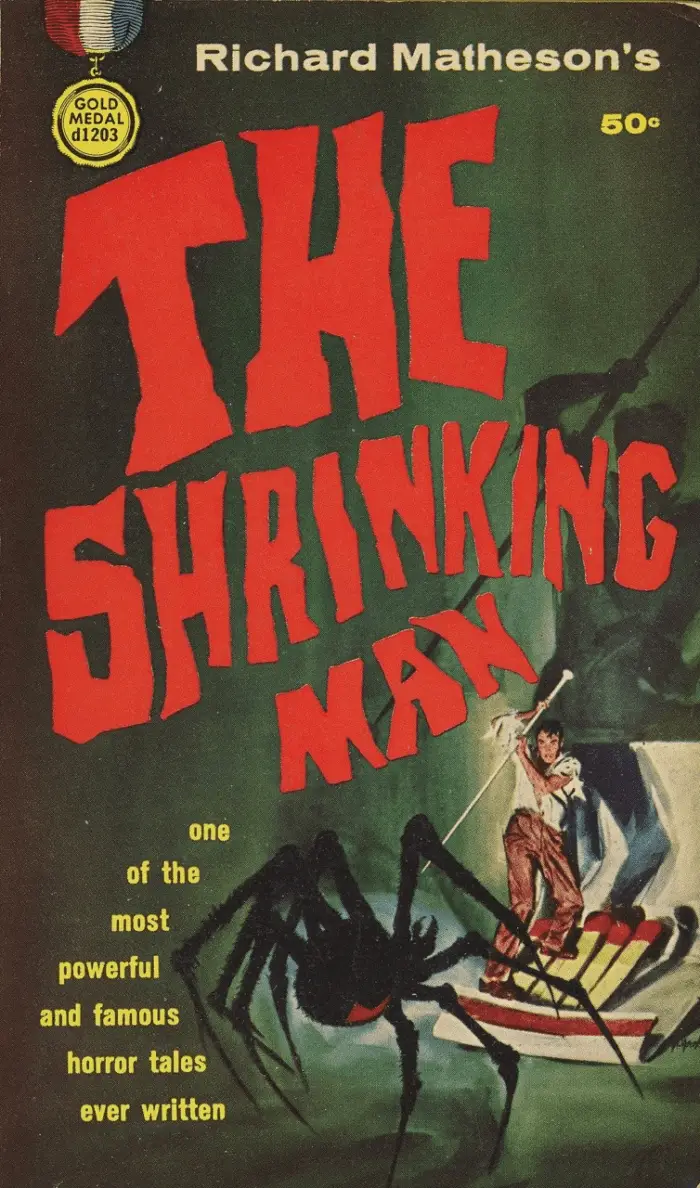
Whether in celluloid or print, the story is perhaps best known for its protagonist, Scott Carey, fighting a giant spider. Yet the horrors of continuously shrinking, to the point insects are colossal adversaries, is a secondary aspect of the plot. In many ways, The Shrinking Man is a Kafkaesque tale of a man wrestling with his place in society — what it means to be a man. Scott is literally and figuratively diminished, becoming a source of ridicule and a burden to his family. Furthermore, as the prospect of shrinking into nonexistence plagues him, the protagonist is forced to consider existential questions about the nature of existence many don’t.
Towards the close of the novel, Richard Matheson wrote, “[Scott’d] always thought in terms of man’s own world and man’s own limited dimensions… for the inch was man’s concept, not nature’s. To a man zero inches meant nothing… but to nature there was no zero.”
Between the action of being pursued by ferocious felines and the terror of titanic black widows, Matheson seeded metaphysical notions which deepened the plot as well as offered hope. Scott is eventually relieved by the realization intelligence — the mind — persists beyond the limits of size. What begins as horror, the dread of change, becomes the opportunity to explore a whole new world.
The novel’s success resulted in Universal Pictures buying the film rights. The studio gave Richard Matheson a chance to pen the screenplay which opened another door for him. Directed by Jack Arnold, who steered such films as It Came from Outer Space (1953) and The Creature from the Black Lagoon (1954), the film adaptation became a hit. From there, Matheson went on to write for several television programs, most notably The Twilight Zone.
Although he wrote several original pieces for Rod Serling’s seminal series, Matheson also adapted many of his own short stories, with the most famous being the legendary “Nightmare at 20,000 Feet.” Again, Richard Matheson masterfully takes an ordinary situation, imbues it with the unreal, and crafts a relatable tale of terror that has haunted readers and viewers for decades.
The plot is marvelously barebones. While on a commuter flight, a fellow named Wilson happens to glance out the window. He sees a gremlin on the wing attempting to sabotage the engines. No one believes him, forcing Wilson to question his own perception. But certain of the frightening sight, he becomes increasingly distraught as he endeavors to save the flight from certain doom. His attempts, however, imperil the plane and the story ends with him being carted away, most likely to the looney bin.
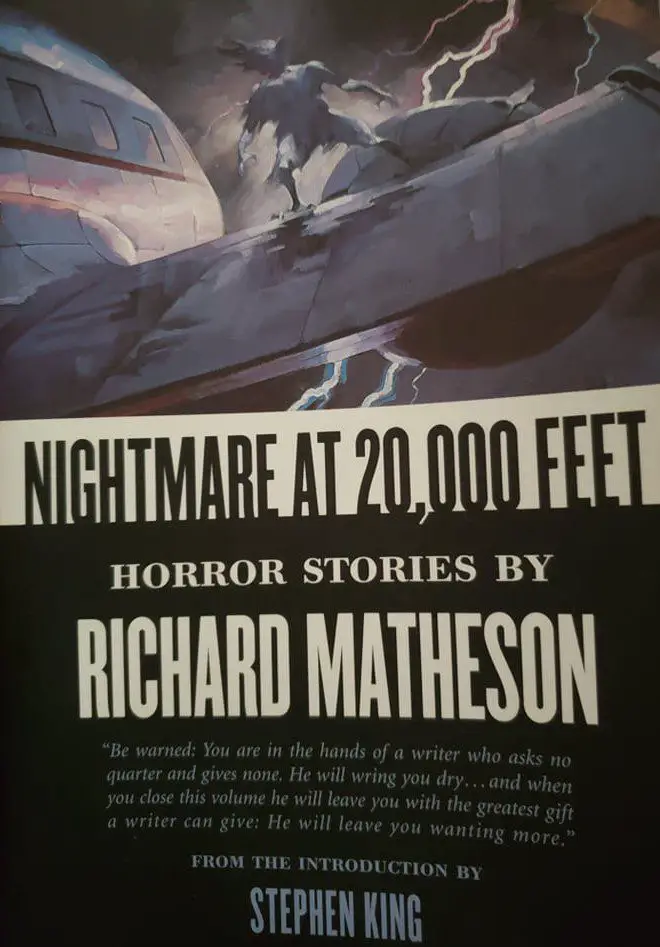
The television adaptation makes it clear Mr. Wilson did indeed witness a destructive gremlin. The film remake in Twilight Zone: The Movie takes a similar stance. The short story, on the other hand, leaves things a bit more ambiguous. The point being there’s absolutely no preferable situation. Either anxiety drove a person insane, while everyone around them treated the nervous breakdown as an annoyance, or gremlins are a real aviation hazard.
Still, in each iteration, the horror is multifaceted. It isn’t simply a creature feature. Part of the main character’s dilemma is being crushed by the emotional weight of circumstance as well as the indifference of those around him. There are zero signs of sympathy from the other passengers who wish Wilson would simply shut up. In many ways, people are the lesser of two evils in these stories.
Consider the novel I Am Legend, where Richard Matheson presents the character of Robert Neville. He’s the sole survivor of a pandemic that transformed the population into vampires. Every day Neville leaves his fortified home to hunt the bloodsuckers, slaughtering them as they sleep. Each night he returns to an empty house, haunted by memories of the past, while vampire hordes surround the premises, banging on the building and baying for his blood.
In the end, it’s revealed there are in fact two kinds of vampires. One is a shambling undead blood fiend. The other kind are intelligent beings. Because Neville couldn’t tell the difference his genocidal campaign included both types indiscriminately. Therefore, the more intelligent vampires, as inheritors of the world, have condemned Neville to death. However, before he dies, Robert Neville takes some solace in the realization he’s become the bogeyman, an urban legend destined to haunt the new vampire race.
Though there are moments of intense action, Neville’s main struggles aren’t against vampires. He’s routinely left wondering what he’s striving to preserve as the last man on earth. His one-man war against the vampires is futile at best, and although he endeavors to find a cure, that seems more like distraction than a path to victory.
Moreover, survival in I Am Legend isn’t merely a matter of battling bloodsuckers. It’s also the struggle against creeping madness in isolation, the strain of suspecting existence is pointless, and the recognition there’s an odd, lost peace in the mundane. After all, Robert Neville regularly misses his quiet suburban life prior to the vampire apocalypse. What used to be boring now seems like heaven in comparison — afflicting him with regret for not appreciating it at the time and making its loss painfully pointed.
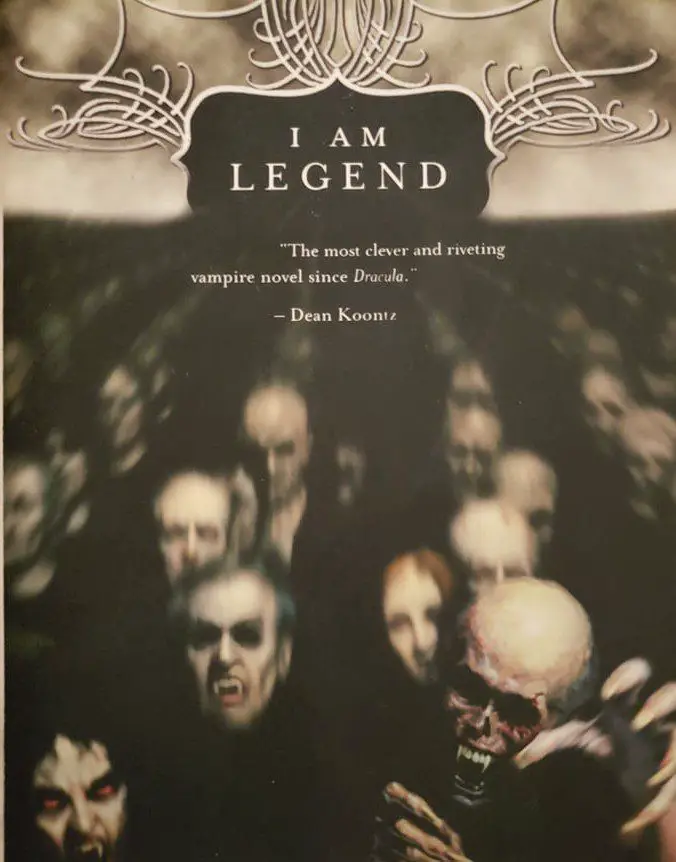
Richard Matheson once remarked that he wanted his writing to raise an awareness of the human condition. That people are more than a brain piloting a meat machine; their goal in life should be to strive for improvement. Robert Neville is often faced with the question: what world am I creating? It seems to be nothing more than blood and violence. At the same time, he’s scourged by the realization he’s the last vestige of a dead world that perhaps deserves to be gone. Everything he does is an effort to reach back, resurrect the past, and only at the end of his life does he realize he’s been fighting the future. His last hope is that the new society will not grow “too heartless” which, in many ways, he did.
Again, perspective is presented like a knife that sharply twists opening a new line of sight. I Am Legend shows how one society’s hero can be another’s monster. It also strips away any glamor in the struggle for survival. Robert Neville isn’t a stoic badass. He regularly breaks down crying, resorts to alcohol as self-medication, and is painfully lonely, longing for any kind of companionship. The vampires, in many ways, are the least of his worries. He can stake them by the dozen, but he can’t kill loneliness.
That kind of double fisted horror is what Matheson routinely delivers. If it’s not the monstrous abominations, it’s the psychological strain that’ll kill. At the very least, there will be scars as haunting as any ghost, altering the outlook forever after.
As Richard Matheson’s reputation grew so did the desire for his works. Over the decades, I Am Legend would be adapted into major motion pictures three times. Oddly enough, each incarnation is wildly different yet possesses a valid take. The Omega Man starring Charlton Heston embodies the futility of fighting the future to preserve a past perhaps better off dead. The 2007 version featuring Will Smith captures the pointlessness of postapocalyptic badassery. Finally, the 1964 rendition, The Last Man on Earth, shows the psychological toll of being a sole survivor. The thing is each film contains an element of the novel which is why three markedly different interpretations of the same text come across equally valid.
With that said, The Last Man on Earth maintains a special significance. Filmmaker George Romero often remarked that he got the idea for Night of the Living Dead from I Am Legend, and there’s a clear line of inspiration from The Last Man on Earth as well. The walking dead in Romero’s movie bear an obvious resemblance to the shambling blood fiends coming for Vincent Price. In that vein, there’s a case to be made that all modern zombie horror, whether television or film, owes something to Richard Matheson. On a similar note, Steven Spielberg is indebted to the author’s creations.
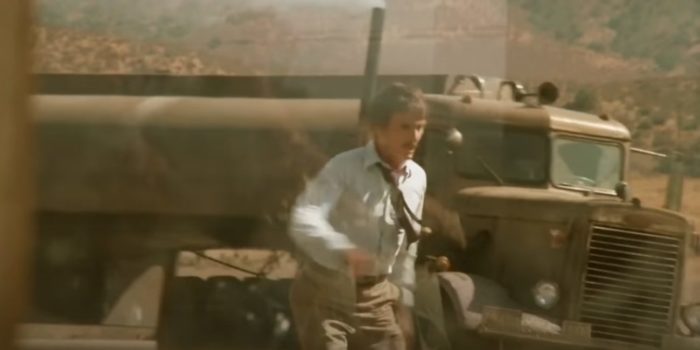
“Duel” is a short story about Mann, a motorist on the way to San Francisco. En route he unintentionally becomes embroiled in a game of cat and mouse with a truck driver who seems determined to wreck if not kill Mann. Why is never really explained. In some ways, it could be considered one of the first road rage thrillers. However, there’s a definite sense the truck driver could just be a big rig riding psychopath.
Again, someone in a banal situation, driving down the highway, finds themselves in life threatening circumstances. Anyone can relate to being on the road and the discomfort of being dangerously tailgated is all too familiar. Here Richard Matheson plants horror in the path of the audience, creating the prospect of truck driving psychos prowling the highways.
Asked to pen a script based on “Duel”, Matheson composed a screenplay for a made for television movie. Producers then tapped a young director named Steven Spielberg to helm the project. The subsequent success of the film launched Spielberg’s career, especially as it directly led to him getting the captain’s chair for Jaws. A case could even be made certain cinematic aspects of the future blockbuster grew out of Duel. Essentially, a killer shark takes the place of the truck.
Vampires, gremlins, ghosts, and psychos — it’s clear Richard Matheson didn’t create anything terribly new. However, much as how rock ‘n’ roll remains the same even as new styles emerge, he injected fresh takes on old ideas. He revamped Nosferatu from a lone killer to a pack hunting horde overwhelming the world. He took the psychopath out of urban alleys and put him on the highway, right behind every reader on the way to work. He wasn’t the first to inject psychological elements in horror either. Charlotte Perkins Gilman, for example, did it expertly in “The Yellow Wallpaper” as did Robert Bloch in Psycho.
What Matheson did, though, is pull from preexisting traditions, the same way all rock derives from the blues, and repackaged it in a way that made readers and viewers more fearful. Norman Bates may be a disturbing and arguably tragic killer, but few see themselves in him. Matheson’s characters, however, are terrifyingly relatable. Often, their circumstances result from no fault of their own. Being in the wrong place at the wrong time, scenarios are almost inflicted on them lending a touch of cosmic horror.
While fishing, Scott Carey is exposed to a radioactive cloud then begins shrinking steadily. Robert Neville’s quiet suburban existence is upended by a vampire apocalypse from out of nowhere. Mr. Wilson wanted to fly, the quickest means to his destination, and then there was something on the wing. This it-could-happen-to-you element is suffused throughout Matheson’s work. Ordinary people doing ordinary things find themselves in extraordinary circumstances. So, Matheson’s audience easily sees themselves in these same situations.
John Gardner, author of Grendel, remarked that, “Good writers see their work as a way of testing abstract ideas in the real world.” Essentially, fiction provides a means to explore thought experiments. Richard Matheson’s works embody this notion. His stories often involve people who are, for lack of a better term, in no way exceptional. However, that’s what makes them relatable.
Consider his short story “Button, Button.” In it, a cash strapped couple is given a box with a button by a mysterious stranger. If they press it, they’ll be given fifty thousand dollars but someone they don’t know will die. The quandary is nothing new. Even now there are memes circulating about what a person might do for the right amount of money, but Matheson encapsulated the horrifying implications of such hypotheticals in “Button, Button.” That even seemingly decent folks will consider murderous villainy given the right incentive. It doesn’t take much to become the bad guy.
Within that tale of moral ambiguity is another signature Matheson element. The couple regularly questions their circumstances. After all, it’s hard to believe pressing a button would just magically, instantly kill someone.
Before metafiction such as the movie Scream, Matheson already injected doubt into protagonists. They usually understand the implausible nature of their situations. However, instead of stirring up ironic smirks, the story stokes a deeper terror. Seeing a gremlin on the wing may seem ludicrous, but it doesn’t change the fact the creature is there. A small doll shouldn’t be any threat to a full-grown adult, yet that won’t stop its blade from slicing deep. The realization a scenario shouldn’t be happening gets turned into a source of madness rather than an eye roll.
In addition, Matheson understood that adding a rational reason to horror could make it even more terrifying. Knowing the cause of the vampiric horde doesn’t stop them from plaguing the protagonist of I Am Legend and worse, creates the false hope of a victory through science. Hell House proposes scientific explanations for ghosts but again, knowing the specters’ origin doesn’t stop them from being dangerous. It’s the equivalent of understanding the biological aspects and mechanics of a shark bite while being attacked by a Great White.
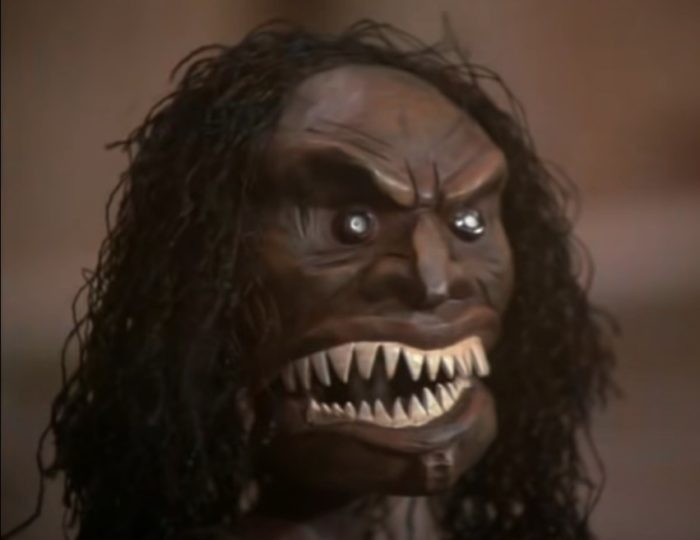
Spare prose, relatable characters, and an ability to make comprehensible, pseudorealistic fantasy — Matheson was a masterful writer. His screenplays, whether originals or adaptations, launched careers as well as love affairs with horror. When he passed away in 2013, he left a legacy few will ever equal. His writing inspired a host of creators. Anne Rice credited his short story “Dress of White Silk” as the spark igniting her love of vampires, and Chris Carter, creator of the X-Files, conceived the idea from Matheson’s made for television films about bedraggled reporter Carl Kolchak. Although Stephen King sometimes gets credit for bringing horror into the suburbs, he regularly reminds people he got the idea from Richard Matheson.
An awareness of the writer isn’t simply a chance for trivia. It isn’t just another name to store away, pulled out to score points with genre aficionados. It’s an opportunity to have more. Every variant of Matheson’s iconic tales is unique and a delectable pleasure on its own. The short story “Prey” adapted into “Amelia” in Trilogy of Terror contains the same plot but not the exact same scares. Therefore, it’s possible to enjoy the read and the film, albeit in different ways. The point being there’s a deeper rabbit hole to explore, especially considering the many marvelous macabre stories of Richard Matheson’s career.
If this isn’t the first time you’ve heard of the writer, perhaps it’s time to revisit Matheson’s mad house. However, if you’re only just becoming aware, welcome to the horror show. There are ghouls, ghosts, and frights aplenty to delight every type of fright fan. Yet, a word of caution. Between the pages there may be the realization of horrors never before considered. Reading Richard Matheson will leave you waiting for the ghost to bite.



